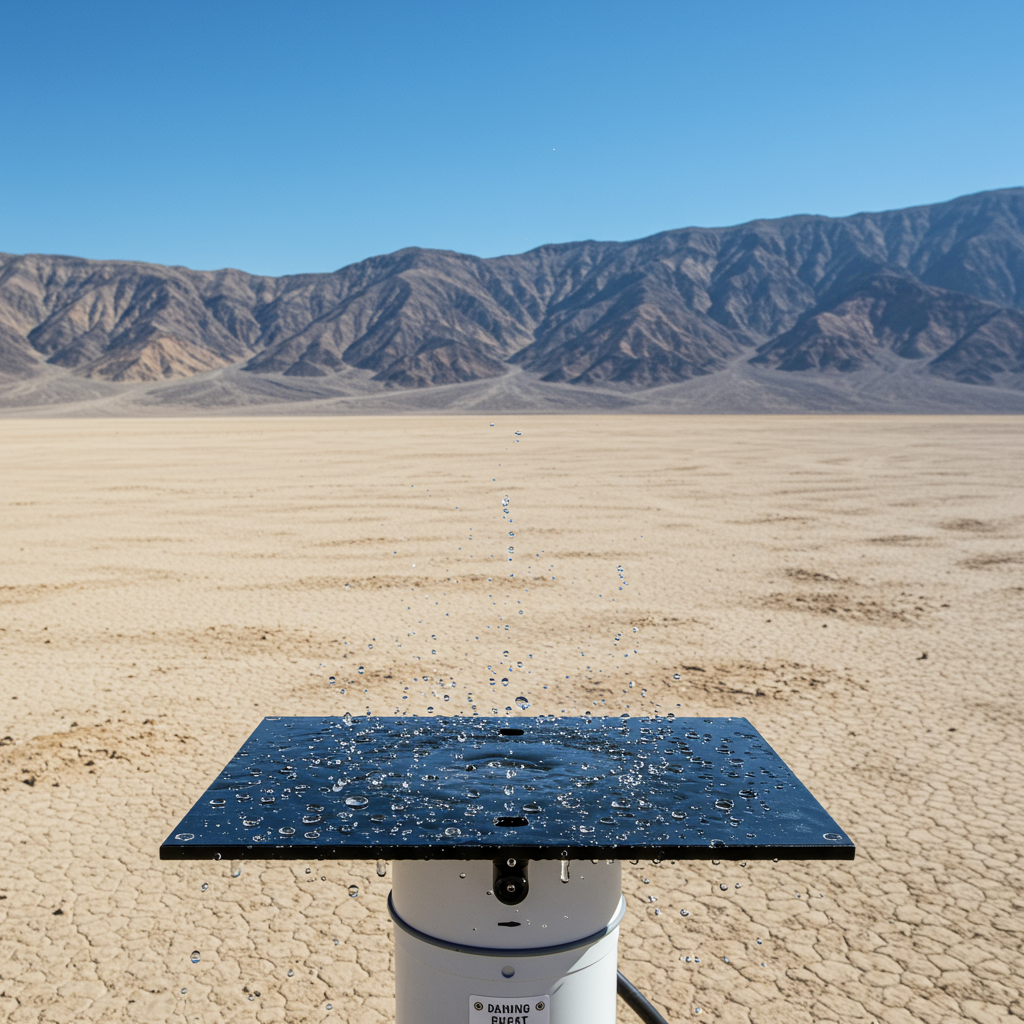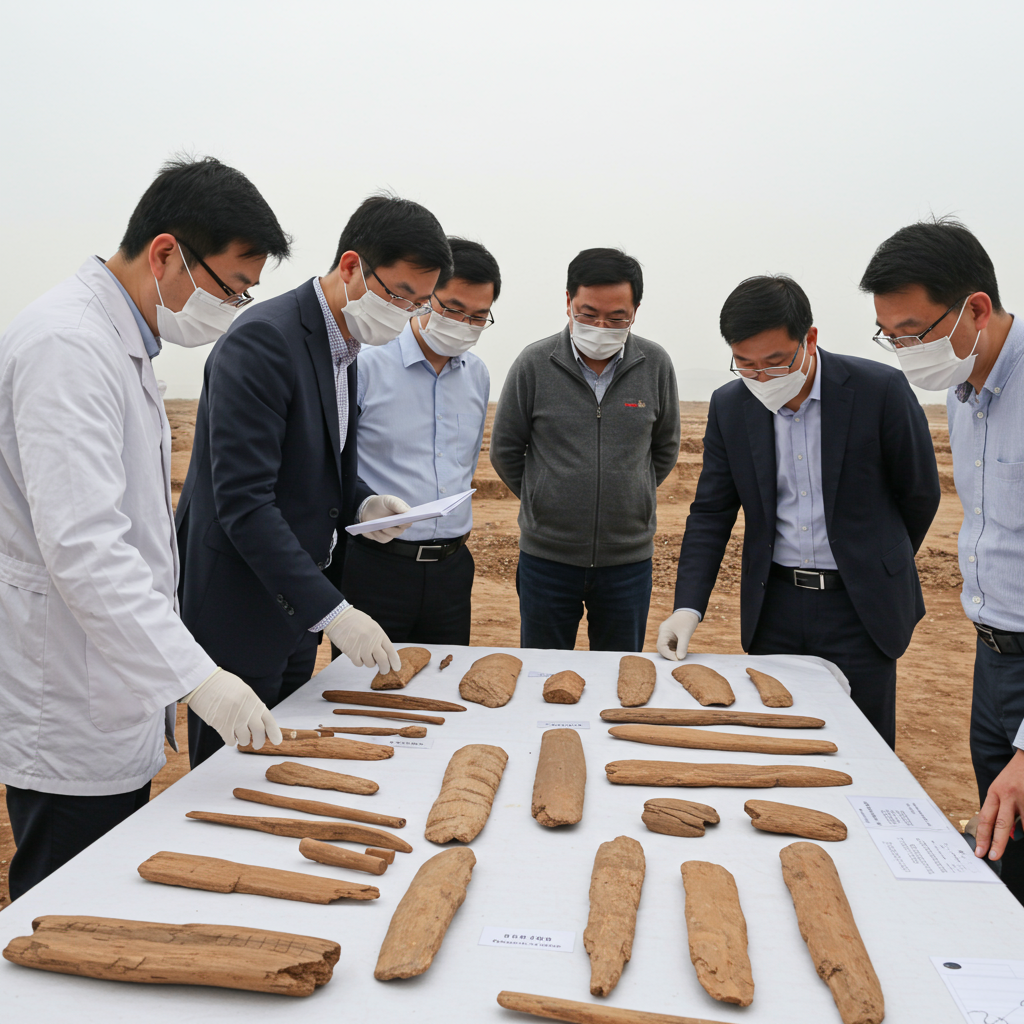Access to clean, safe drinking water remains a critical challenge for billions worldwide. Traditional water sources are increasingly strained by climate change, pollution, and growing populations. But what if you could pull pure water directly from the air around you, even in the most arid environments on Earth? Breakthrough research from MIT offers a stunningly simple yet powerful answer: a passive, electricity-free device capable of harvesting drinkable water vapor from the atmosphere. This innovative technology, recently proven effective in the scorching heat and extreme dryness of Death Valley, represents a significant stride toward providing accessible hydration globally, wherever air contains even a trace of moisture.
Revolutionary Tech Captures Atmospheric Water
At its core, the MIT water harvester is a remarkably clever system combining smart materials and passive environmental principles. Developed by engineers at the Massachusetts Institute of Technology, the device utilizes a specialized hydrogel. This material is exceptionally good at absorbing water vapor from the surrounding air. Unlike many complex water purification systems, this technology operates without requiring any external power source, such as electricity or solar energy, making it ideal for off-grid or resource-limited regions.
The unique structure of the hydrogel is key to its efficiency. It is formed into a series of dome-like shapes, visually resembling black bubble wrap. These domes inflate as the hydrogel absorbs water vapor, dramatically increasing the material’s surface area. A larger surface area allows the hydrogel to capture significantly more moisture from the air compared to flatter designs.
The Absorption and Condensation Cycle
The entire hydrogel system is housed within a sealed enclosure, effectively creating a miniature, controlled environment. This enclosure consists of two layers of glass, giving it the appearance of a window panel. The process unfolds naturally through daily temperature cycles.
During the cooler nighttime hours, the hydrogel actively absorbs water vapor from the air that circulates within the glass chamber. As day breaks and temperatures rise, the absorbed water begins to evaporate from the hydrogel. This water vapor then encounters the inner surface of the cool glass panel. A special coating on the glass helps maintain a temperature differential, encouraging the transition from gas back to liquid.
The water vapor condenses onto the cool glass surface as pure liquid water. Gravity then takes over, causing the condensed water droplets to trickle down the pane. This collected water is guided into a system of tubes located at the bottom of the panel, ready for collection and consumption. This passive cycle, driven by natural temperature changes and material properties, allows the device to continuously harvest water.
Proven Performance in Extreme Aridity
To rigorously test the device’s capability, researchers deployed a prototype in one of the most challenging natural laboratories available: Death Valley, spanning parts of California and Nevada. Known as the hottest place on the planet and the driest location in North America, Death Valley presents an ultimate test for atmospheric water harvesting. The air holds minimal moisture, pushing the technology to its limits.
Over a week-long testing period in this exceptionally arid environment, the single panel prototype successfully produced a measurable amount of water each day. The yield ranged from about a quarter to two-thirds of a cup (approximately 57 to 161.5 milliliters) daily. While this might seem modest, it’s a remarkable achievement given the extreme lack of humidity in the test location. The successful demonstration in Death Valley underscores the device’s potential to function even in places where traditional water sources are scarce or nonexistent. Scientists anticipate that the system would harvest significantly higher volumes of water in more humid climates.
Outperforming Existing Methods
The MIT team highlights that this passive design offers a distinct advantage over many previous attempts at capturing air-based water. Older technologies often rely on high energy consumption, requiring electricity or complex solar setups to drive condensation or absorption processes. By eliminating the need for external power, this new “bubble wrap” harvester significantly reduces operational costs and logistical challenges, making it more viable for widespread deployment, particularly in developing regions lacking robust energy infrastructure.
Ensuring Water Safety and Purity
A significant hurdle for many hydrogel-based water harvesting designs has been the purity of the collected water. Hydrogels often contain salts, such as lithium salts, added to enhance their water absorption capacity. These salts can leach into the harvested water, rendering it unsafe for drinking without additional, often complex, purification steps.
The MIT team successfully addressed this critical issue. Their innovative design incorporates a salt stabilizer, glycerol, directly into the hydrogel material. This additive effectively minimizes the leakage of lithium salts into the collected water. Rigorous testing confirmed that the salt levels in the harvested water remained below 0.06 parts per million (ppm). This level is significantly lower than the threshold estimated by the US Geological Survey for safe lithium salt concentration in groundwater, ensuring the collected water is safe for direct consumption. This focus on inherent water quality is a crucial feature for practical application.
Scaling the Technology for Household Needs
While a single, window-sized panel demonstrated its effectiveness in a harsh environment, it typically would not produce enough water to meet the daily needs of an entire household. However, the device is designed with scalability in mind. The panels are relatively compact and have a small footprint, making them suitable for deployment in arrays.
Researchers estimate that an array comprising eight panels, each measuring approximately 3 feet by 6 feet (1 meter by 2 meters), could potentially harvest enough safe drinking water to supply a household. These panels can be set up vertically, minimizing the required ground space. This modular approach allows communities or individual households to tailor the system size to their specific water requirements.
From an economic perspective, the developers suggest the system could be highly cost-effective, particularly when compared to the ongoing expense of purchasing bottled water. They estimate that in regions where bottled water is common, an eight-panel array could potentially pay for itself in less than a month and is designed for a lifespan of at least one year, with potential for longer use depending on the materials. Xuanhe Zhao, a professor and author on the study, emphasized the ease of scaling, stating, “We imagine that you could one day deploy an array of these panels, and the footprint is very small because they are all vertical… Now people can build it even larger, or make it into parallel panels, to supply drinking water to people and achieve real impact.”
The Path Forward for Passive Water Harvesting
The successful demonstration in Death Valley and the innovative design tackling purity and power needs represent major steps. However, the research team continues to refine the technology. Ongoing work focuses on optimizing the hydrogel material itself to potentially increase the speed of water vapor absorption and subsequent production. They are exploring ways to enhance the intrinsic properties of the hydrogel for even greater efficiency.
The team also plans to conduct further real-world testing. They intend to deploy the panels in a variety of resource-limited environments beyond extreme deserts. Testing in locations with different humidity levels, temperatures, and air quality will provide valuable data on the device’s performance under diverse conditions and help inform future design iterations and deployment strategies. Collaboration with international researchers underscores the global potential and scientific rigor behind this project.
Addressing Global Water Scarcity
This passive atmospheric water harvesting technology holds significant promise in the global effort to combat water scarcity. It offers a decentralized, sustainable solution that does not rely on depleted groundwater reserves, vulnerable surface water sources, or energy-intensive desalination processes. For the estimated 2.2 billion people currently lacking access to safely managed drinking water, innovations like the MIT “bubble wrap” harvester could offer a lifeline, providing a reliable supply of clean water directly from the air they breathe. Published in the journal Nature Water, the research signifies a tangible advancement towards making safe drinking water accessible wherever it’s needed.
Frequently Asked Questions
How does MIT’s air-to-water device work without electricity?
The device operates passively through a natural evaporation and condensation cycle powered by daily temperature fluctuations. A special hydrogel material absorbs water vapor from the air at night. As temperatures rise during the day, this water evaporates within a sealed glass chamber. The vapor then condenses into liquid water on a cool glass surface, which is collected without needing pumps or external power.
Where did MIT researchers test the water harvesting technology?
The researchers conducted a key real-world test of the device in Death Valley, California/Nevada. They chose this location because it is one of the driest and hottest places in North America, providing an extremely challenging environment to demonstrate the technology’s ability to harvest water vapor even from very arid air.
How much water can the MIT panel system provide for a home?
A single panel, while effective, does not produce enough water for an entire household. Researchers estimate that an array of approximately eight standard-sized panels (3×6 feet each) could potentially supply enough safe drinking water for a household’s needs. The system is designed to be scalable, allowing multiple panels to be deployed together.
This innovative approach leverages fundamental science and material properties to create a sustainable, decentralized solution for water access. The successful tests, particularly in a harsh environment like Death Valley, demonstrate its potential to impact communities facing water shortages globally. As research continues, optimizing efficiency and scalability, this passive air-to-water technology could play a crucial role in addressing one of the world’s most pressing challenges.




